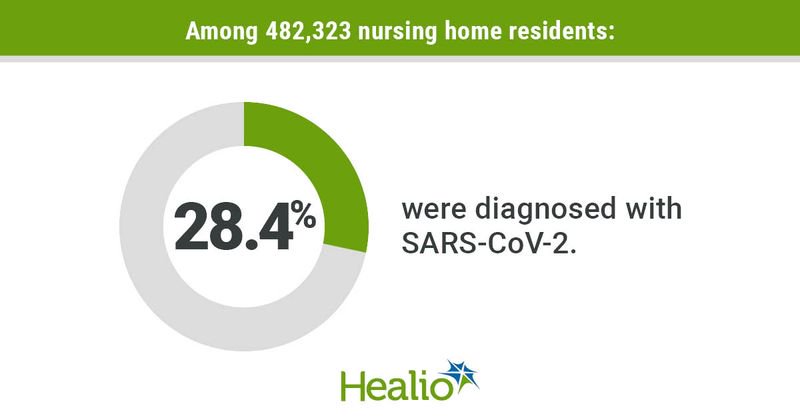SARS-CoV-2 infection in nursing homes associated with county, facility
The risk for SARS-CoV-2 infection in long-stay nursing home residents is related to the county and facility of residence, according to study results published in JAMA Network Open.
The analysis also showed that the risk for hospitalization and death following infection was associated with facility and resident characteristics.

“For many resident characteristics, there are substantial differences in risk of hospitalization vs. mortality,” Hemalkumar B. Mehta, PhD, an assistant professor of epidemiology at Johns Hopkins Bloomberg School of Public Health, and colleagues wrote. “This may represent resident preferences, triaging decisions, or inadequate assessment of risk of death.”
Mehta and colleagues performed a retrospective cohort study of long-stay residents aged 65 years or older who had fee-for-service Medicare. A total of 482,323 residents were analyzed from 15,038 nursing homes between April 1 and Sept. 30, 2020. The researchers assessed the association of patient characteristics with outcomes, as well as the risk for SARS-CoV-2 diagnosis.
Of the residents, 28.4% were diagnosed with SARS-CoV-2 and 21.3% were hospitalized. A total of 19.2% of residents died within 30 days of analysis. Individual nursing homes accounted for 37.2% of the variation in infection risk, and an individual county accounted for 23.4% of infection variation.
Infection risk increased with body mass index (adjusted HR = 1.19; 95% CI, 1.15-1.24). Hospitalization risk after SARS-CoV-2 also increased with BMI (aHR =1.4; 95% CI, 1.28-1.52), being male (aHR =1.32; 95% CI, 1.29-1.35), Black (aHR =1.28; 95% CI, 1.24-1.32), Hispanic (aHR =1.2; 95% CI, 1.15-1.26) or Asian (aHR =1.46; 95% CI, 1.36-1.57). Impaired functional status (aHR =1.15; 95% CI, 1.1-1.22), renal disease (aHR =1.21; 95% CI, 1.18-1.24) and diabetes (aHR =1.16; 95% CI, 1.13-1.18) were also associated with hospitalization risk.
Mortality risk increased with impaired cognition (aHR =1.79; 95% CI, 1.71-1.86), functional impairment (aHR =1.94; 95% CI, 1.83-2.05) and age (aHR =2.55; 95% CI, 2.44-2.67).
“There was an inconsistent association of risk of hospitalization with increasing age among U.S. nursing home residents diagnosed with SARS-CoV-2,” the researchers wrote. “This may represent resident or family preference to avoid hospitalization, or triaging decisions in areas where hospital beds were scarce, or lack of appropriate clinical evaluation and prognostication in facilities overwhelmed by the pandemic, or perhaps some combination of these or other explanations. Understanding this phenomenon may require a qualitative approach.”

